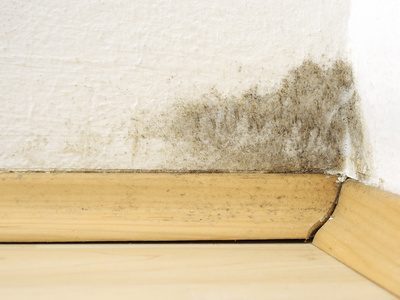Damp and Mould: The New Rules Every Social Landlord Must Know
Published on June 30, 2024 by Sarah Mac

Awaab’s Law was introduced in July 2023 as part of the Social Housing (Regulation) Act. It is one of the biggest government reforms affecting social housing, and has brought in changes to make sure tenants are protected from the damaging effects of damp and mould.
What is Awaab’s Law?
Awaab’s Law requires social housing landlords to stick to strict time limits to address dangerous hazards like damp and mould, and forms part of the Social Housing (Regulation) Act.
The law cam about following the tragic death of two-year-old Awaab Ishak who died due to a respiratory condition caused by exposure to extensive mould in the social housing in which he lived. Despite the family reporting the mould to the landlord, no action was taken to deal with it in the three years between they notified it, and Awaab’s death.
Awaab’s law aims to prevent future tragedies and protect the health and safety of social housing tenants. Social housing landlords are legally required to take rapid action to resolve any reported damp or mould, and show every attempt to comply within the prescribed timescale.
In line with the government’s guidance on the health risks of damp and mould for landlords, it will not be allowable to hold tenants accountable for the presence of mould or damp in their homes. It can no longer be blamed on lifestyle choices of tenants, and investigations and remedial works should be undertaken by landlords within a fixed period.
How should social landlords approach Awaab’s Law?
The Department for Levelling Up, Housing and Communities (DLUHC) has published guidance to social landlords. The guidance encourages landlords to make sure that all their properties meet the Decent Homes Standard, to make themselves aware of any properties that fail to meet the standard and to carry out swift maintenance where required.
Landlords are required to undertake an assessment of:
- Damp and mould issues within the property, including any signs of category 1 and 2 damp and mould hazards
- Required actions for any damp and mould issues
If these assessments indicate that the landlord is in breach of regulatory standards, they are required to self-refer to the Regulator of Social Housing.
Awaab’s Law dictates that social housing landlords must:
- Commence investigations of known or reported hazards within 14 calendar days
- Provide a report within the 14-day timeframe, including information on the hazard, the solution to resolve the hazard, and a clear timescale to resolve it.
- Commence repair work within seven calendar days, where the hazard is defined as a significant risk to the health or safety of the tenants, also taking into account the age and vulnerability of the tenants
- Complete repair work within a reasonable time period as defined in the Landlord and Tenant Act 1985
- Complete emergency repairs within 24 hours
- Provide alternative accommodation if repairs cannot be completed in the prescribed timescales
- Keep a clear record of all correspondence between tenants and contractors
These new rules should form part of a tenancy agreement, which allows tenants to hold landlords legally accountable.
How should social landlords prepare to meet the requirements of Awaab’s Law?
Landlords now hold responsibility for identifying and resolving not just the damp and mould itself, but also its underlying causes. This could mean things like structural issues, or insufficient ventilation.
Whilst reactive maintenance is vital, a proactive approach should take priority so that damp and mould is avoided altogether within future developments.
How does enforcement of Awaab’s Law work?
Social landlords who fail to meet the requirements of Awaab’s Law can be taken to court by their tenants.
The Regulator has the power to issue unlimited fines, and to enter properties with 48 hours’ notice if emergency repairs are required.
Are there any broader implications of Awaab’s Law?
Whilst Awaab’s Law specifically targets the social housing sector, its principles will echo around the entire housing industry.
Similar standards for health and safety in private rented accommodation are reflected in other legislation, including the Landlord and Tenant Act 1985, and the Homes (Fitness for Human Habitation) Act 2018, and if it is finally ratified, the Renters (Reform) Bill will also drive up standards in the private rented sector.
Keeping landlords compliant with fully managed housing inspections
Regular inspections are vital to detect hazards to health and safety, such as damp and mould. Even when issues have been remedied, there’s still a requirement for ongoing monitoring to check the problem hasn’t recurred.
However, it can be a challenge for landlords to keep on top of statutory duties, especially when there’s a large stock of properties that need inspecting regularly.
In such cases, our fully managed periodic inspection service will prove valuable.
Our service includes:
- Contacting tenants and arranging inspections directly with them
- Reporting back with comprehensive details of all potential hazards
- Providing a detailed property condition report
- Issuing weekly progress reports, including any access issues
We also offer an inventory check-in and check-out service, giving you a clear picture of reasonable deductions for damage.
To learn more about this service and to discuss your property inspection needs, please get in touch.

